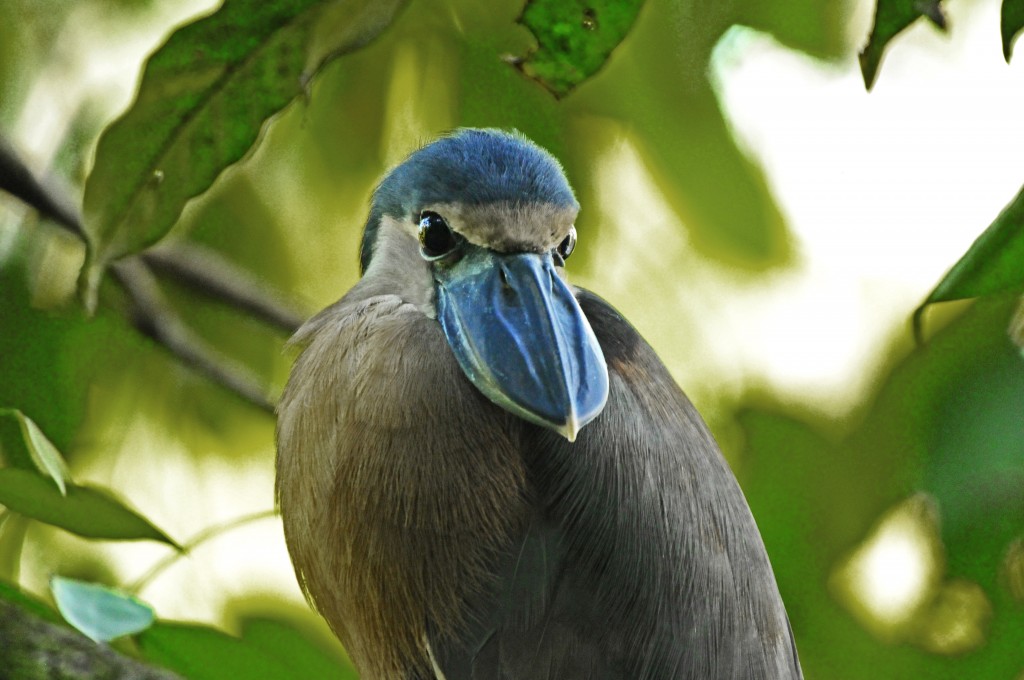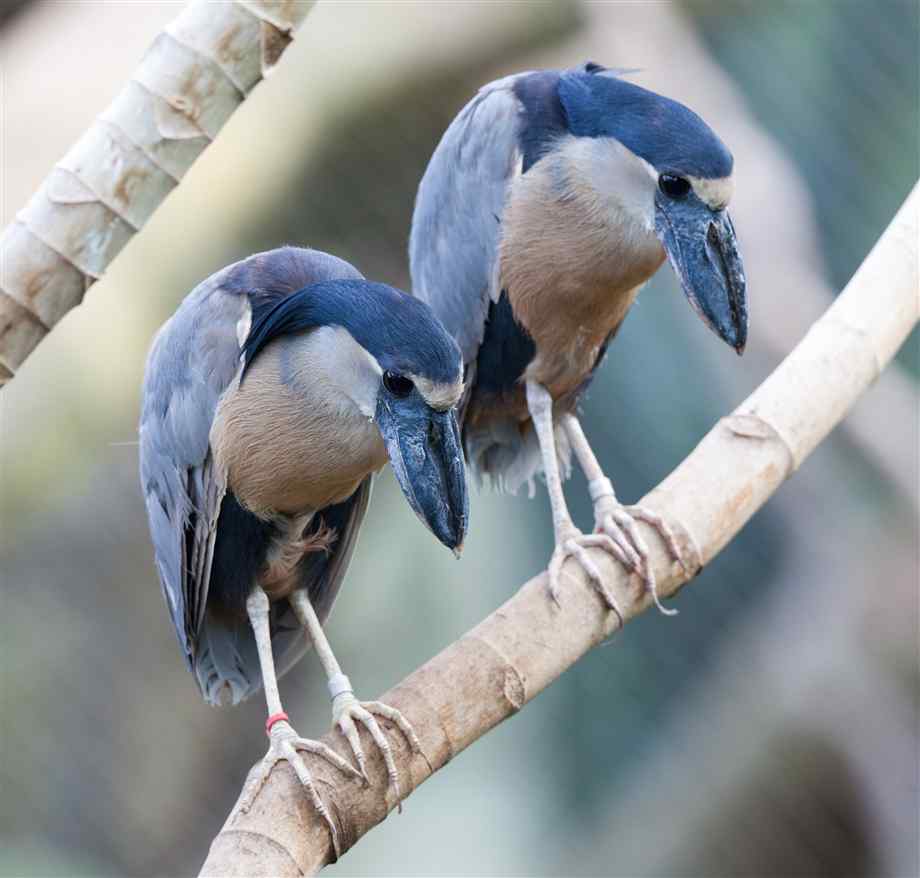
Cochlearius cochlearius
SUBFAMILY
Cochleariinae
TAXONOMY
Cancroma cochlearius Linnaeus, 1766, Cayenne. Five subspecies.
OTHER COMMON NAMES
French: Savacou huppй German: Kahnschnabel; Spanish: Martinete
Cucharуn, Pato Pico de Barco.
PHYSICAL CHARACTERISTICS
The boat-billed heron is a stocky, medium-sized (18–20 in
[45–51 cm]) mostly black and white and sometimes buff heron,
with a huge black bill. The head is black, with a crest of long,
black, lanceolate plumes that are most extravagant during the
nesting season. The huge eyes bulge out from the face. The
upper back is black, the rest of the back and upper wings are
gray. The underparts are a rich rufous. During breeding the
mouth lining, lores, and gular area turn black.
DISTRIBUTION
The boat-billed heron occurs in South and Central America.
HABITAT
It primarily uses wooded or mangrove fringes of freshwater
creeks, lakes and marshes. It roosts in the day time in bushes
or trees overhanging water.
BEHAVIOR
Despite its great bill, this species for the most part feeds like a
typical heron by standing, sometimes for many minutes, usually
in a crouched posture. It also walks in its crouched,
hunched-backed posture with very slow deliberate steps on the
ground or along branches and roots. It sometimes uses a
rhythmic movement of the body but not the head. It sometimes
walks very quickly or runs about. It also feeds non-visually
by wading along with its bill partially submerged thrusting
it forward in a scooping motion with each step. During the day
it perches in dense trees and bushes, and also retreats there
when disturbed. When roosting, its large bill rests on its breast
or under a wing. It uses its crest for communication, raising it
in response to disturbance and as a greeting display. This is a
noisy heron, having a raucous laughing call that is a commonly
heard sound along the tropical mangroves and inland forests.
Also makes a popping noise with its bill.
FEEDING ECOLOGY AND DIET
It feeds nocturnally and crepuscularly although it occasionally
feeds during the day. It feeds alone, flying from the communal
roost to independent, probably defended, feeding areas. Occasionally
it will feed in aggregations. The diet is broad and includes
insects, shrimps, fish, amphibians, and small mammals.
REPRODUCTIVE BIOLOGY
Breeding timing is variable, generally in the rainy season. The
heron nests solitarily or in small groups of a few to a dozen
pairs but also joins mixed heronries. The eggs are pale blue to
green, often with spotting. Clutch size is usually three eggs,
range one to four eggs. Incubation is 26 days. The young are
at first fed entirely at night. The adult is aggressive in defending
the young from all intruders, a
BEHAVIOR
not typical of
herons.
CONSERVATION STATUS
Not threatened. The species is widespread and found in suitable
HABITAT
throughout its range. There is little information
available on population sizes and status, but it is not rare.
SIGNIFICANCE TO HUMANS
This is the most unusual of the herons, with its huge bill, unusual
BEHAVIOR
s, and evolutionary distinctiveness from other
herons. It is well known locally where it occurs, especially due
to its calls from nesting colonies.
Photo Gallery of - Boat-billed heron




 Animalia Life
Animalia Life